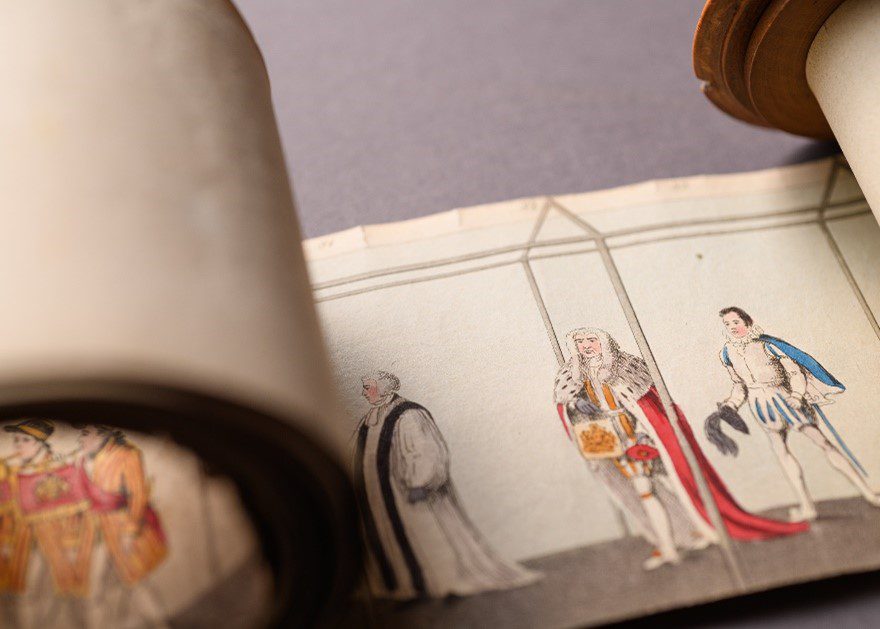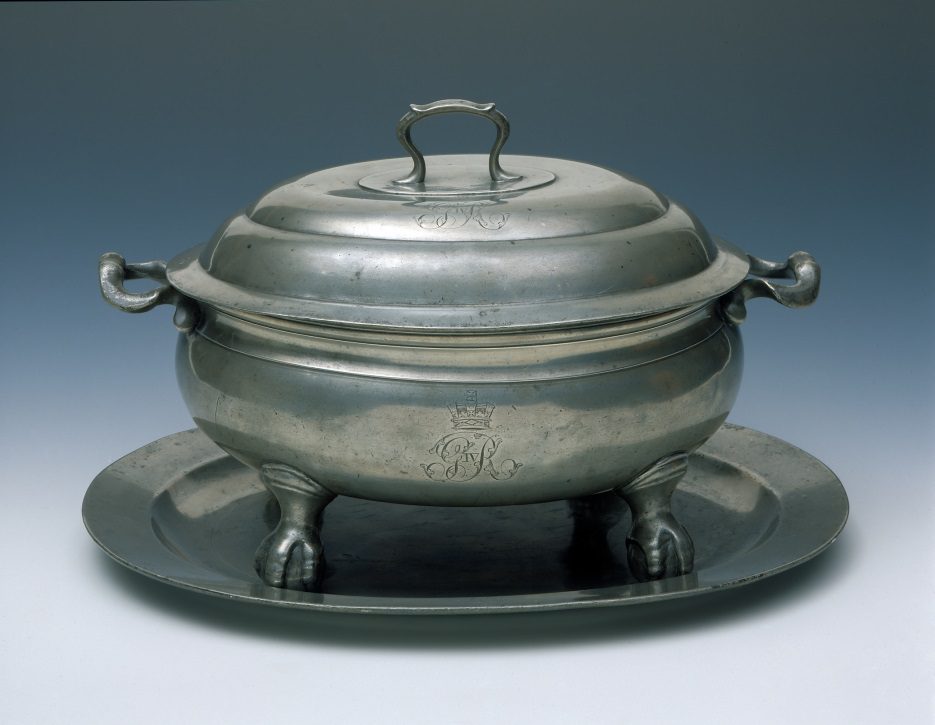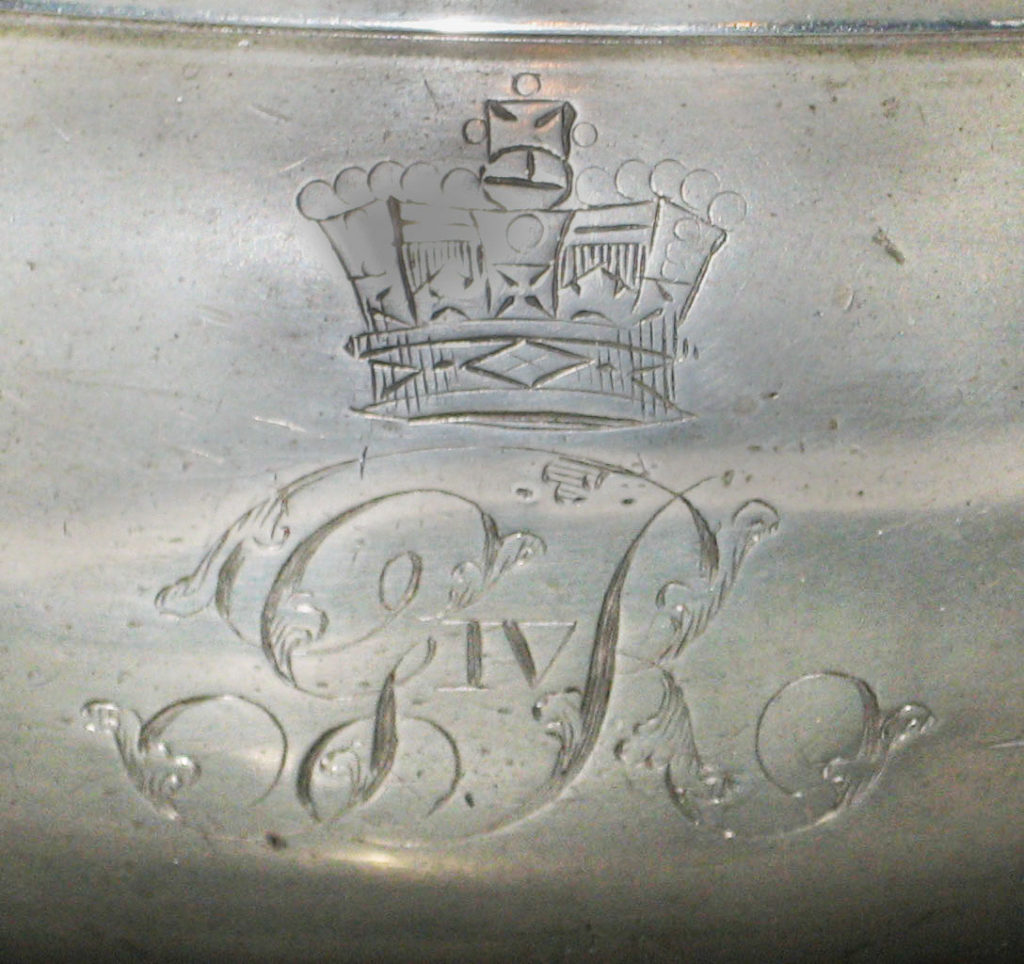For the first time in more than 70 years, a new monarch of the United Kingdom will be crowned on May 6—King Charles III. Objects commemorating coronations have been a tradition for hundreds of years, and Winterthur has many examples in its collection.

England; probably 1822
Hand-colored etching on wove paper in cylinder covered with varnished etching and engraving with hand coloring
Gift of the Estate of Mrs. George P. Bissell 2020.0017.010a-c
One of the newest is a remarkable hand-held panorama reel of King George IV’s coronation procession in 1821. The object reveals important information about the historic event and those who participated in it. Wound on a bobbin casing and housed in a wooden cylinder, the paper is pulled through a slot, which allows the holder to witness the procession in action. The panorama reel is on view in Conversations with the Collection in the first floor of the Galleries.
Ceramic mugs and plates are commonly created to commemorate a monarch or a specific event such as a coronation. A delftware plate portrays William of Orange (r. 1689–1702) and his wife, Mary Stuart (r. 1689–1694). The couple, who jointly ruled the kingdoms of England, Scotland, and Ireland, is shown in an outdoor setting wearing their coronation attire, with the initials “W M R” for William and Mary Rex/Regina near their heads. This plate was most likely made in Bristol or London around the time of their coronation. Evidence of delft commemorative plates like this one have been found in America, particularly in New England.

A more elaborate scene from the coronation of Queen Victoria in 1838 is featured on a printed textile in the collection. The swags of flowers that surround the scene resemble those used to decorate fabrics with American patriotic motifs. Evidence of patterns showing Queen Victoria’s coronation have been found in America.

The ceremony portrayed above hints at the richness of objects used during the coronation—the Crown Jewels, King Edward’s Chair, the Anointing Spoon, and much more. These objects are integral parts of the coronation ceremony and will be used on May 6 for King Charles.
The coronation of King George IV is also represented in the Campbell Collection of Soup Tureens by a pewter tureen, one of a group of table wares created for the banquet following the ceremony. The menu featured turtle soup, which may have been served in this very vessel. The Observer reported that crowds plundered the tables of the coronation banquet, taking the pewter dishes like this one marked for the sovereign. It bears the inscription “G IV R” below a crown.

One of the tureens that came to Winterthur as part of the Campbell Collection is from a group of pewter tureens and other tableware created for the banquet following the 1821 coronation of George IV. The banquet’s menu featured turtle soup, which may have been served in this very tureen. The Observer reported that crowds plundered the tables of the coronation banquet, taking the pewter dishes like this one marked for the sovereign. It bears the inscription “G IV R” below a crown. Unlike the objects above, which were souvenirs made for purchase, this object was made for use during the coronation festivities, and it was acquired by someone who decided to keep it without permission.
Post by Kim Collison, director of exhibitions
